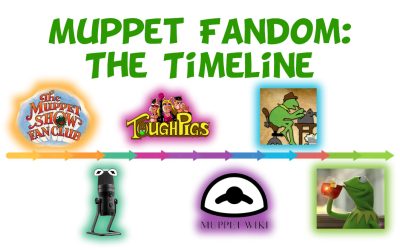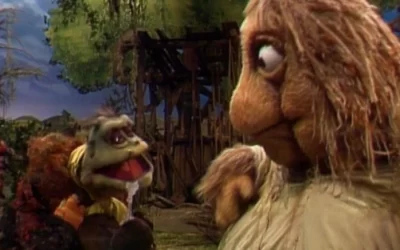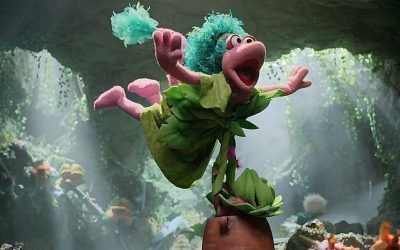 Continuing our Q&A with Muppet writer, Jim Henson Legacy president, and Muppets Character Encyclopedia author Craig Shemin. Don’t forget to read Part 1!
Continuing our Q&A with Muppet writer, Jim Henson Legacy president, and Muppets Character Encyclopedia author Craig Shemin. Don’t forget to read Part 1!
TP: Are there any hard and fast rules that you have for what to always do, or what to never do, when writing for the Muppets or for any specific characters?
CS: There are not really hard and fast rules. Basically you want them to sound like each individual character. I try not to have a character make a joke that anybody can make. I try and write from a place of character more than a place of just joke-joke. I don’t think there are any hard and fast rules, it’s just about trying to make them feel real. Certain characters are harder to deal with than others.
TP: Is there a character that’s most difficult to write for?
CS: Sometimes Kermit, because he’s a little bit of everything. He’s fun when he gets aggravated, and when he loses a little control, but it takes a while to get him there. You can’t get him there if you’re writing an essay or something like that.
One of my other early things was when they asked Jim to do a Kermit essay for Newsday‘s Sunday magazine. They were doing a whole issue about advice for the ’90s. They asked me to do it, and they gave me part of the money that Newsday was paying, but that was a very challenging thing to do, because it was not dialogue. You couldn’t have other characters push Kermit’s buttons. Kermit runs the risk of becoming wimpy if you don’t handle it right.
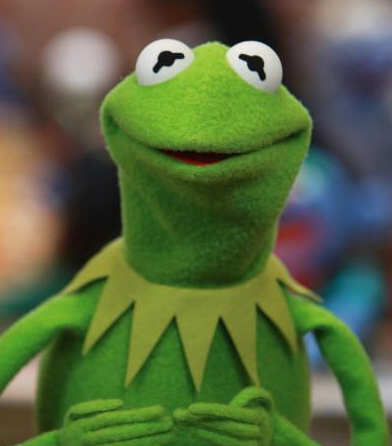 TP: You don’t have any thoughts on, like, “We only want to have two ‘green’ jokes, and no more than four ‘I’m a frog’ jokes…”
TP: You don’t have any thoughts on, like, “We only want to have two ‘green’ jokes, and no more than four ‘I’m a frog’ jokes…”
CS: No… When you’re dealing with Piggy, there are certain things like you don’t want too many “Mois.” You try and alternate “moi” with “I.” Too many “mois” and “vous” become difficult on the eye. But there are no rules; it’s not like “You can only have three in this.” It comes with time, and it’s very subjective. I will write something, and I’ll send it to Jim Lewis to get an opinion, and he’ll say, “I think it’s one too many ‘mois,'” and I say, “Oh, I think the ‘mois’ are fine!”
You want things to sound organic, and there are attitudes that you want to keep in mind. The attitudes come from the performers as well as what’s happened in the past. One of the things I always keep in mind when dealing with Gonzo is that Gonzo is not just a wild daredevil. He is a guy who is trying to create great art, so everything has to be from that point of view. He’s not just going to jump off of something, he has to do it in pursuit of a higher goal. I think you can see if someone is writing Gonzo and they’re like, “Oh, he’s going to jump into this, and jump into that…” There needs to be a reason, so I’m thinking about the reason and how to keep that in mind, and that will keep Gonzo real.
And with Fozzie, he doesn’t just tell bad jokes. Fozzie is trying very hard to be the best bear comedian in the world, and along that pursuit he tells some really awful jokes, but it’s part of a bigger purpose. The characters need to want something. Whether you’re doing a script, or you’re doing an interview, that has to come through. You have to establish what these characters want in life and that makes them real. So that’s sort of the rule that’s not really a rule.
TP: Do you ever end up reading or watching something by another writer and going, “Ahh, that’s not what Gonzo would say!”
CS: Yes.
TP: Okay, we can leave it at that!
CS: But not often. A lot of times I hear or see something, and I just think, I wouldn’t have done it like that. It’s a unique thing, because there are so many people involved in presenting these characters to the public — and each person along the way believes that they’re most important. [Laughs.]
It is really one of the most collaborative experiences you can imagine. Everyone’s input needs to be respected. When we would do Miss Piggy TV appearances, I would go to the workshop and see what Piggy was going to be wearing, and they’d want to know what she was going to be talking about. Sometimes I would go with Frank, while he was looking at the pig and figuring out what she was going to wear.
There was one time we were doing it to promote something, and somebody at the shop — I think it might have been Barbara Davis — said, “She just looks so beautiful, her hair looks great, it’s a shame I have to put those ears on her.” And Frank said, “Let’s just not put the ears on her.”
TP: We’ve seen that! It’s weird.
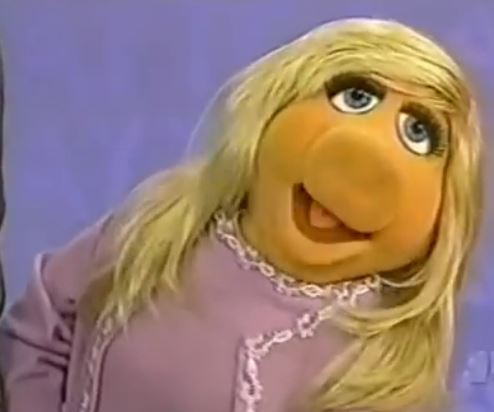 CS: It is weird, and we got a lot of questions about it. Frank just said, “If anybody asks, they’re tucked under her hair.” He said, “Women do lots of painful things for beauty.”
CS: It is weird, and we got a lot of questions about it. Frank just said, “If anybody asks, they’re tucked under her hair.” He said, “Women do lots of painful things for beauty.”
That was a choice that Frank made, and in one of the same visits, they were looking at outfits, and Barbara Davis — the late, wonderful costume person who did a lot of Piggy’s stuff at that period of time — Barbara said, “We’d have a lot more flexibility if we didn’t always have to match these lavender gloves.” Frank said, “She doesn’t have to wear lavender gloves. She can wear any gloves.”
I swear, it must have been a week later we were in the shop, and Barbara had made dozens of different-colored gloves. There were animal prints, and different colors, different shades, and from that point on, Piggy could wear different colored gloves. A lot of times, someone needs to make that choice of where to take that character that’s become so familiar for her lavender gloves, and for her ears. People will make a choice. And something like the ears will get a lot of volume, but no one cared that Piggy was wearing different gloves.
TP: Do all of the performers try to have as much input as Frank?
CS: A lot of them do, yeah. I think that Frank was unique because Miss Piggy was one of the few characters who would do a lot of these solo appearances. I ended up working a lot more with him because he just did a lot more of them. We would do appearances with Kermit and Gonzo, but I think in that period of time we were doing more Piggy stuff because she was doing her perfume, and she was doing her cookbook, and a lot of other things.
I worked with Dave a lot, doing stuff with Gonzo for Larry King Live, and The Rosie O’Donnell Show, and certainly Steve. What’s interesting is that Frank will work with you and do your material, but it’ll be a jumping off point for him. But at that period of time, Steve was so new to Kermit, a lot of it would be word-for-word. He had a lot more to say if I was doing a Rizzo thing than if I was doing a Kermit thing, at that point. Now he’s very vocal with Kermit because he’s been doing it a lot longer. I hadn’t been writing a lot of Kermit stuff, but I had more experience writing Kermit stuff than Steve had performing it, but now Steve has a lot to say about where the character goes… and so do the people who own him now.
TP: There was an interview about the Toyota Highlander commercial where it just seemed like he was completely unrehearsed, off the cuff…
CS: Yeah. That will happen as the people get more familiar. I did a few things with Eric Jacobson when he took over [as Miss Piggy]. The first few appearances on talk shows, I was actually under there with him, so I could slide him notes. Once he had a few of those under his belt, I didn’t need to be there.
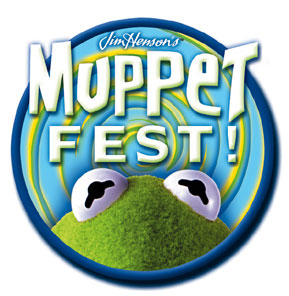 TP: I think I would be terrified performing Miss Piggy live.
TP: I think I would be terrified performing Miss Piggy live.
CS: One of the first times he ever did a Piggy thing was for MuppetFest. We knew that Frank was not going to do it, but we did not want to throw Eric into the live show where he was going to be seen by hundreds of people for one of his first times, so we decided to have Piggy participate via video. We shot a couple of things for the MuppetFest convention itself, and then the bit that was shown during the Brooke Shields segment of the live show. Did you guys go to that?
TP: No, and it kills us. We’ve heard a lot about it.
CS: Oh, you missed that? It was somethin’ special, let me tell ya! We actually shot that, I think, in Emilio Delgado’s dressing room at Sesame Street.
TP: Wow.
CS: Yes. Eric was there, we were all there, they set up a little camera, and we went and shot those segments, and a lot of people couldn’t tell.
TP: Everyone assumed that was Frank.
CS: Yeah, and Eric has done just an amazing job. So that was our way of getting Piggy into the show without throwing Eric to the lions.
TP: Speaking of MuppetFest, you have become the face of the Jim Henson Company for the fans, at least locally, because you’ve been hosting so many things like MuppetFest, and all the Museum of the Moving Image screenings, and when things go on tour… How do you feel being in that position for the company?
CS: I love sharing the Henson work with people. That’s one of the most exciting parts of what I do now, when I’m not creating new material. There is so much great stuff that doesn’t get seen, that is either not available publicly, or people just don’t know about it. There’s a lot of “We want more stuff to be released by Disney,” but I think there are a lot of people who haven’t seen what they have released.
I love sharing it, and I think it’s a great way of us getting people into the history, but we also need to be aware of the fact that the Henson Company continues to move forward. We try and balance what we do, and there’s a reason that we celebrate the work of the past, but we try to also be aware of the present. I try not to come up and say, “This is really the cool stuff; don’t look at what’s happening now.” I don’t live in a bubble like that. I think that there is good stuff out there now — there’s also not-great stuff out there now. But the same could be said of any period in Henson history.
I want people to be able to enjoy both the work that Jim did, and the work that Jim inspired. Because of our role at the Jim Henson Legacy, we really do mostly stuff about the history, and then there’ll be times when we do screenings of the new things.
It’s an enjoyable thing. I spent fourteen years on staff at the company, and it is wonderful to work for a company that you can be proud of the work it’s trying to do. Whether it is always successful or not was another question, but you know at the base of it, they’re trying to make a difference, they’re trying to do good work. It’s not like people working at tobacco companies, who get up every morning and say, “Oh hey, let’s go back to another day of killing people!”
So that was always a kick to me, that I worked for a long time for a company where, whenever I told people who I worked for, they’d be like, “Oh, that’s great!” Then there were times when I didn’t appreciate it as much, because it’s not always a walk in the park. It’s work. It’s a job. We’re not having parties every minute, with Munchkins and Oompa-Loompas. But it was a group of people that was trying to do good stuff.
I don’t remember who told me this — it may have been Kirk Thatcher. I started in ’87, and Fraggle Rock had just ended, and Kirk said, “The Golden Age of any place is always six months before you get there.” I had a feeling sometimes that I was missing out on the Golden Age. Then people who came in after me may have felt that they were missing out on a Golden Age, so it always changes.
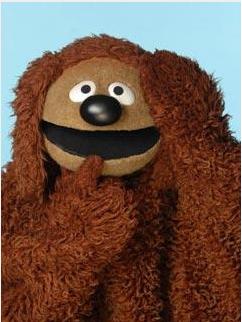 TP: Do you have a favorite of those compilations, or even a specific clip from the screenings, either because of the audience reaction, or just because you love it so much yourself?
TP: Do you have a favorite of those compilations, or even a specific clip from the screenings, either because of the audience reaction, or just because you love it so much yourself?
CS: I really enjoy all the compilations. I think that’s one of my happiest moments, to hear the audience react to the compilations. I can’t really pick a favorite. We just did a Rowlf compilation that was really, really enjoyable for me, because I love the character. We got some new material here and there, and it went over really well with the audience, and I love that. But I love them all.
I remember presenting them in Australia — I got to go to Melbourne, Australia to present them, and they loved it. Full audiences. We had to start late because people were still getting tickets. They packed the whole theater, and I just love hearing the reaction, especially when you’re realizing that most of this material was never made to be shown in front of an audience, where you can hear the laughter. I love showing the stuff that is hard to find, like the Muppet Show promos and some of the guest appearances. There’s still stuff out there that we would love to get our hands on, and we’ve tried, and then there’s some stuff out there that just doesn’t exist.
TP: I still remember seeing “Muppets 101” for the first time at BAM in 2004, and it was the first time I had ever watched anything Muppets with an audience, aside from the movies. It was a packed house, and I was standing at the back because there were no seats left, and the Leprechaun Brothers was one of the clips that you showed. I’ve seen it a dozen times or more, but the laughter was so contagious, I remember tears in my eyes, I was laughing so hard at that thing.
CS: Oh yeah. It’s something special about seeing a group of people together and sharing that experience. I love putting them together, and I couldn’t pick a favorite.
When we first started doing them, we would stop and start the tape, and I would talk in-between segments — or whoever was presenting it. We had Dave Goelz do it a few times on the west coast. Eventually, I figured out that when I would present it, I talked a lot in the beginning, and then I’d realize that we were running out of time in the time slot. My intros to the first couple of clips were very long and in-depth, and then I’d be like, “Andnowlet’swatchtheMuppetShowpromos!” I realized that we needed to do something, so that’s when I started doing the title cards in between, to make it more like a seamless documentary, where we can tell the story in the title cards and we don’t have to break up the rhythm.
I got a call from Dave Goelz when he was presenting it out on the west coast, and I don’t think we had told him that we had changed the format of the show. Dave calls me, and he says, “I’m looking at this thing, and it keeps going, and there’s title cards in it!” And I say, “Yes, I forgot to tell you that we did that!” And he says, “Oh, thank you! It’s so much better to let it go, and I’ll talk at the end, and I can answer questions. It’s perfect!” He was so excited that we did it that way, because it’s a hard thing to do. “Muppets 101” has like eight segments to break up, so that was really a turning point. We did that for the first time in “Muppets 201,” and now we went back and I revised “101” and “Commercials & Experiments” to also have that.
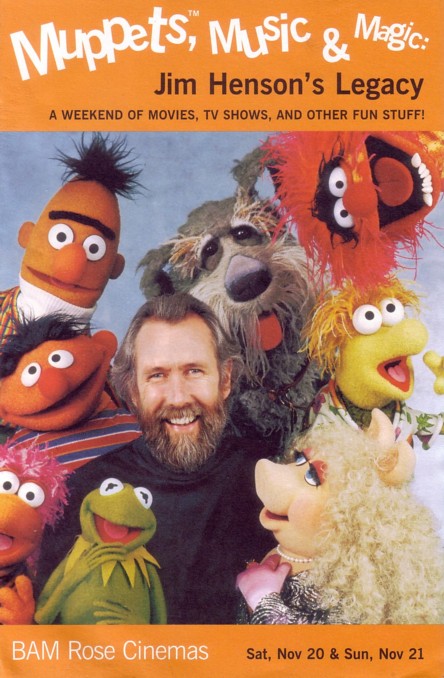 TP: You do a lot of Q&As with these screenings. Do you ever get unusually silly questions, or unanswerable questions?
TP: You do a lot of Q&As with these screenings. Do you ever get unusually silly questions, or unanswerable questions?
CS: A lot of people ask the same questions. “How do you get a job,” that’s a very popular one. “When is X coming out on DVD?” One of my exciting times was when we were doing the thing in Brooklyn, that first screening. Disney had just told me that they were doing The Muppet Show [on DVD]. In fact, they had set up a camera at BAM and they were interviewing some of our guests — Jerry Juhl, Jerry Nelson — and they’d go up and do interviews, that I don’t think they ever used, so somewhere there’s this treasure trove of interviews. They had just told us that they were doing the season one collection, so that was the only time someone asked, “When is the–” “As a matter of fact, I can tell you that Disney has decided to put it out!”
There are some odd instances… We did a screening at Cinema Arts Center in Long Island, and a woman was dressed up head to toe like Gonzo. Blue makeup. And Dave was a little nervous. But people want to know a lot of the same things, and I can’t remember any real specific stumper.
Come back soon for more great stuff with Craig Shemin! Click here to leave your ears at home on the Tough Pigs forum!
by Ryan Roe – Ryan@ToughPigs.com

